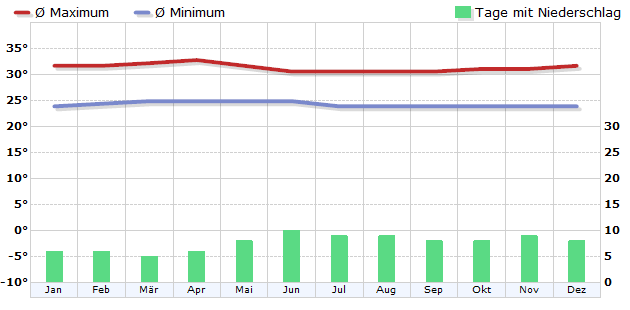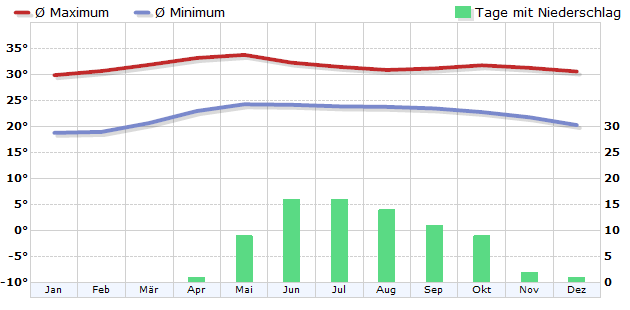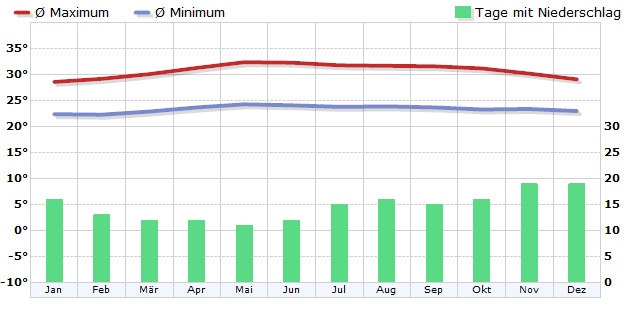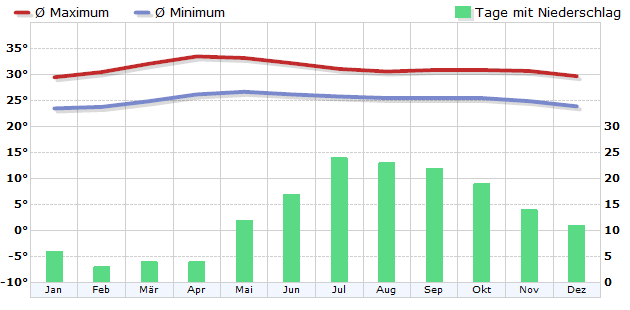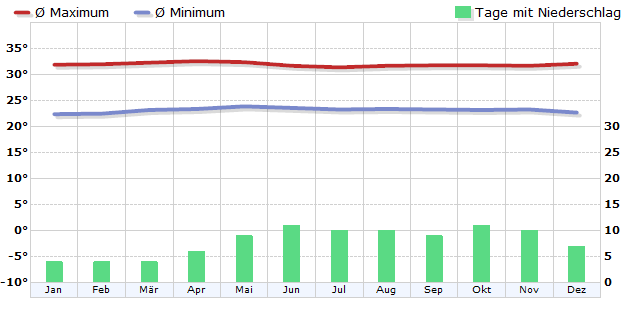Climate Philippines
Due to their proximity to the equator, the Philippines has a tropical climate. A distinction is made between regions that are always humid and regions that are not affected by monsoons. In the always humid tropics, to which the southern islands belong, the temperature and precipitation fluctuations are rather small during one year. The average maximum temperatures are usually between 31 and 33 degrees. The islands in the centre and north of the Philippines, on the other hand, are strongly influenced by the southwest monsoon, which brings heavy rainfall especially between June and October. The rainy season is followed by the driest, but initially coolest months of November to February with temperatures just below or around 30 degrees. From March to May the warmest temperatures are reached with an average of 32 to 33 degrees. Annual precipitation in the Philippines is between 1500 and 3000 mm per square metre, depending on the region. Typhoons sweep across the island state on a regular basis, especially in the second half of the year.
The best time to travel to the Philippines is from December to February. This is when the least rain falls and the risk of hurricanes is the lowest.

